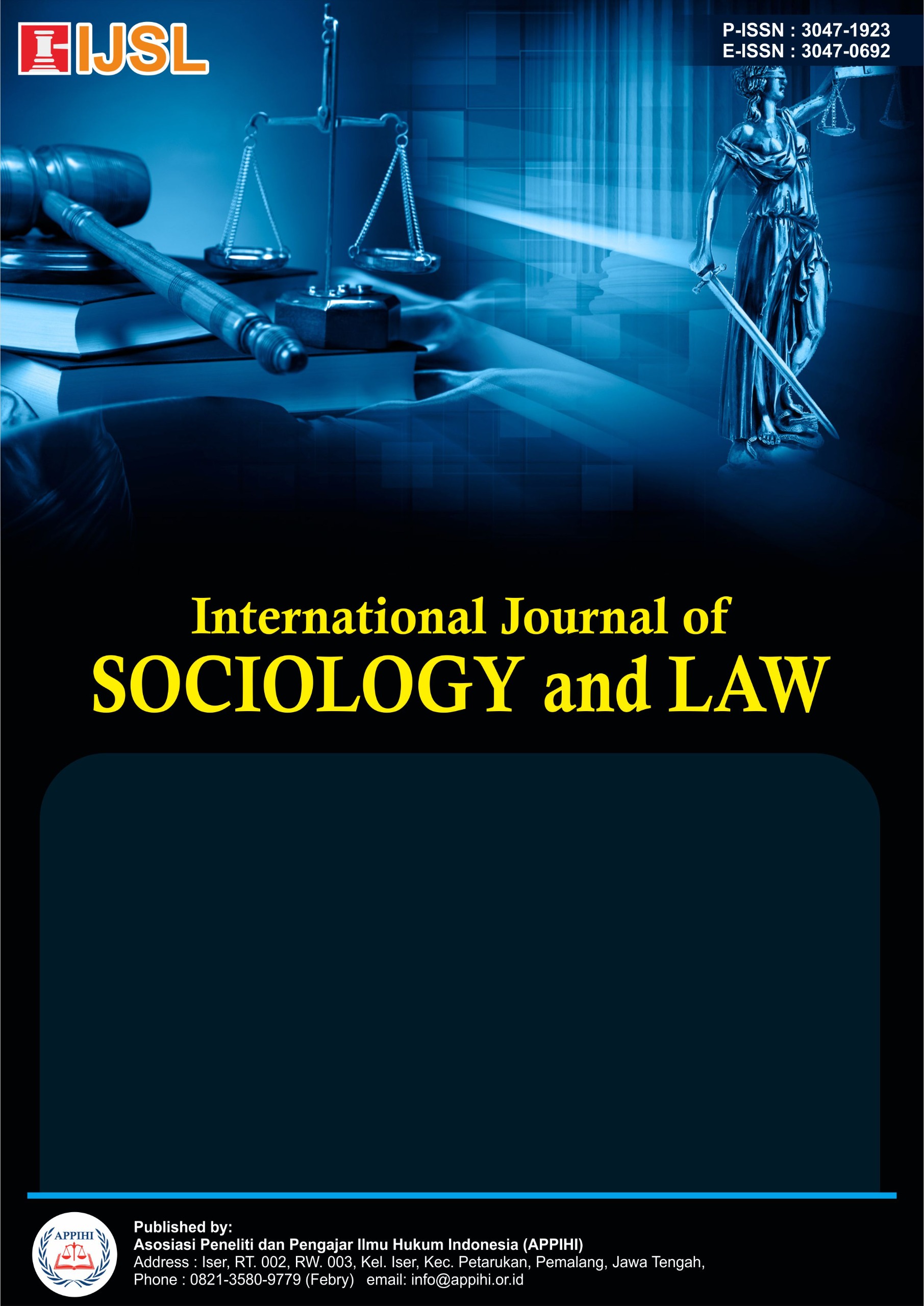Juridical Review of Money Laundering in Digital Financial Transactions
DOI:
https://doi.org/10.62951/ijsl.v2i2.597Keywords:
Money laundering, Digital financial, transactionsAbstract
Money laundering is the act of changing or hiding money or assets resulting from crime to appear to have come from a legal source. Haram funds can damage the market and harm honest business actors. The study addresses two main issues: Does digital financial transactions fall into the category of money laundering. Are the rules related to digital transactions included in the crime of money laundering (TPPU)? The research was carried out using the method of juridical analysis, which is to examine the applicable legal rules. The results show that digital transactions have the potential to be used for money laundering, especially through technologies such as digital payments and cryptocurrencies that can disguise transaction traces. Technological advances and lifestyle changes also affect the economic system. Today, electronic money is widely used through e-commerce, online transportation services, and digital merchants. Based on Articles 3, 4, and 5 of the Anti-Corruption Law, anyone who disguises the origin of assets from criminal acts — including through digital transactions — can be sentenced to up to 20 years in prison and a fine of up to Rp10 billion.
Downloads
References
Ahmad Redi. (2016) Mining and Coal Dispute Settlement Law, Sinar Grafika, Jakarta.
Djulaeka and Devi Rahayu, Textbooks, p.17. doi:https://doi.org/10.31289/doktrina.v2i2.2615
Fakhriah, E. Lae. (2017). "Electronic Evidence in the Civil Proof System." Bandung: Refika Aditama.
Fuady, M. (1999). Modern Banking Law Based on the Law of 1998 First Book, Bandung: PT. Image of Aditya Bakti.
Hafidz, Jawade. (2022). "The Phenomenon of Flexing on Social Media in Aspects of Criminal Law." Jurnal Cakrawala Information, Vol. 2, No. 2
Jones, C. C. (2012). Virtual Economies and Financial Crimes. United Kingdom: Edward Elgar Publishing Limited.
Muhaimin. (2017). The Application of the Principle of Opportunity by the Attorney General's Office Is Contrary to the Principle of Legality and the "Rule Of Law." Journal of De Jure Legal Research, 17(1), 108–122.
Pohan, S. (2019). Normative Review of Prosecution Authority by the KPK for Money Laundering Crimes. DOCTRINE: Journal Of Law, 2(2), 117-134.
Ramdhani, G. (2019). 6 Electronic Money That Is the Mainstay of Today's Millennial Generation. Retrieved May 8, 2021, from Coverage 6 website: https://www.liputan6.com/bisnis/read/4074871/6-uangelektronik-yang-jadi-andalan-generasi-milenial-zaman-now
Ramelan, (2008), Annotated Money Laundering: Case Reports, Pustaka Juanda Tigalima & ELSDA Institute, Jakarta.
Rosadi, Sinta Dewi. (2015). "Cyber Law, Aspects of Data Privacy According to International, Regional and National Law." Bandung: Refika Aditama.
S. H. Djulaeka and S. H. Devi Rahayu, Textbooks: Legal Research Methods (Scopindo Media Pustaka, 2020),p.30
S. H. Djulaeka and S. H. Devi Rahayu, Textbook: Legal Research Methods (Scopindo Media Pustaka, 2020), p. 60
H. I. Jonaedi Efendi, S. H. Johnny Ibrahim, and M. M. Se. (2018) Legal Research Methods: Normative and Empirical (Prenada Media), p. 15.
Sjahdeni, Sutan Remy. (2004). "The Ins and Outs of Money Laundering and Terrorism Financing." Jakarta: Pustaka Utama Grafiti.
Suharni. (2018). Electronic Money (e-Money) Reviewed from the Perspective of Law and Social Change. Journal of the Legal Spectrum, 15(1)
Yunus Husein, (2007). Anti-Money Laundering Potpourrith, Books Terrace and Library, Bandung.
Article 2 of Law Number 8 of 2010 concerning the Prevention and Eradication of Money Laundering
Law No. 25 of 2003, concerning Money Laundering
Downloads
Published
How to Cite
Issue
Section
License
Copyright (c) 2025 International Journal of Sociology and Law

This work is licensed under a Creative Commons Attribution-ShareAlike 4.0 International License.





